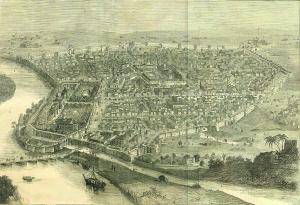
The Han meets the Yamuna river and tells her how even she can flow and flourish in peace. Han smiled and hugged Yamuna. For a moment, Yamuna forgot the toxic filled surrounding she lived in. Yamuna lowered her eyes and began opening up to Han. “Look where I live Han. I cannot breathe; move my arms or even my feet. Every day, the drains add more filth into the river and the people of the city for whom I travel from so far, do not even throw a glance at me. For them, I am a stinky black drain.”

The clothing industry puts a huge strain on the environment. How? Let us take a look at the life of a common garment: t-shirt.

When the rain gods do not send water for irrigation, farmers look downwards, at groundwater, for help. But, years of groundwater exploitation and lack of recharging, has led to a fall in the water tables. For instance, in north and central Gujarat, water tables have dropped to 20m per decade since 1974, as per a study by the Central Ground Water Board. If this continues, extracting groundwater will get more expensive because we have to dig deeper, or worse, groundwater will be only a myth for future generations.

Wetlands purify water through natural processes where aquatic plants act as bio-filters. Plants absorb phosphates and nitrates from the water and roots help to put back oxygen into the water. Constructed wetlands are a cost-effective method of treating wastewater and polluted water bodies. These are low cost solutions and can be easily made or replicated.

Water is the essence of life, and we need to adopt practices to save and reuse it

How the life around the Yamuna River changed with time and people Tributaries of the Yamuna flowed through the city and several rulers tapped the streams and fed the water through massive sluices into tanks, to provide water for their people. Today, these tributaries have dried up and become cemented tunnels underneath the city that carry sewage to the Yamuna.

Every monsoon the incidences of caving in increases. Nature or human activities–who is to blame?

It is said that when the British Governer General Warren Hastings brought the water hyacinth to India in the 18th century, thinking it was a flower, he couldn't have imagined that was actually a deadly weed.

